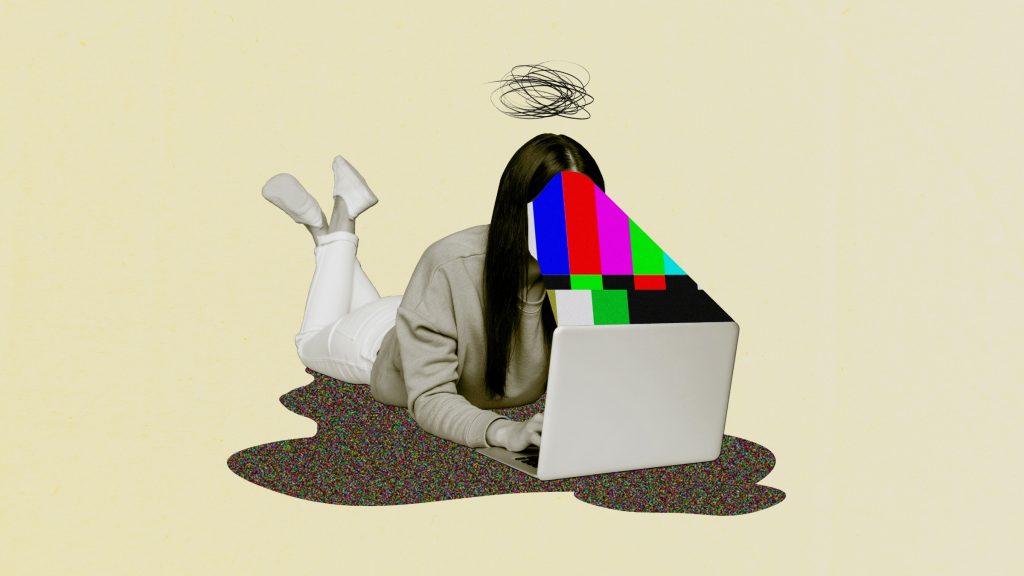
The endless cycle of negative news online known as “doomscrolling” has become a growing mental health concern, as experts warn that as you scroll through your social media the constant exposure to distressing digital content is reshaping how our brains process stress, fear, and empathy.
Psychiatrists and communication experts say this digital habit of social media scroll, which intensified during the pandemic, has blurred the line between staying informed and being consumed by anxiety.
“Our brains and bodies are expertly designed to handle short bursts of stress. But over the past several years, the stress just doesn’t seem to end,” said a lecturer at Harvard Medical School, Dr. Aditi Nerurkar.
How Does Doomscrolling Affect Your Brain?
Doomscrolling, explains psychiatrist Professor Kemal Sayar, stems from our evolutionary need to detect danger, “humans have evolved an acute sensitivity to threats,” he said, noting that constant exposure to negative information can cause chronic stress, inflammation, psychosomatic illness and even addicted to negative news.
As you scroll through social media, the behavior activates the brain’s amygdala, the structure responsible for triggering the fight-or-flight response. “Stress stokes our primary urge to scroll,” said Dr. Nerurkar. “We’re hypervigilant and scanning for danger. The more you scroll, the more you feel you need to.”
Studies statde as you scroll through social media feed it is linked excessive to anxiety, depression, and insomnia, while physical symptoms can include headaches, muscle tension, and elevated blood pressure. “When people doomscroll for hours, they’re sedentary for a long time too,” Dr. Nerurkar added. “The ripple effects are vast and problematic.”
Women and trauma survivors appear to be especially vulnerable. “Most violent media is about hurting women and children,” said a professor of psychiatry at Harvard, Dr. Richard Mollica. “People who’ve lived through violence doomscroll out of fear—they want to feel safe, but doomscrolling acts as a trigger.”
Scroll-Stopping Is Not Easy
YouTube, owned by Alphabet, is introducing features to stop doomscrolling, acknowledging social media and social anxiety along with the addictive design that sparks debate over whether Big Tech is finally addressing the harm it knowingly created.
Big Tech companies have started responding to the public’s growing concern over compulsive scrolling. YouTube shorts won’t stop scrolling recently rolled out a feature that lets users set daily limits for watching, hoping to help viewers “take control of their screen time.” But the feature is optional and easily dismissed.
While platforms like YouTube and TikTok are introducing tools promoting digital wellbeing, critics question their effectiveness. “If platforms wanted to effectively tackle users’ screen time concerns, it might be better if you could set limits that weren’t easily dismissible,” wrote 9to5Google, suggesting that engagement metrics often outweigh wellness priorities.
How to stop the scrolling digital burnout, to break the habit, experts recommend digital boundaries: keeping phones off nightstands, switching devices to grayscale, and opting out of notifications. “Are you using your device, or is your device using you?” Dr. Nerurkar asked pointedly.
Professor Sayar advocates for “hopescrolling” intentionally following positive content to counter negativity. “We find what we seek,” he said, quoting Rumi.
In the end, the challenge lies not just in limiting screen time as you scroll through your social media but in reclaiming emotional balance between social anxiety and social media. “We need to stay informed,” Dr. Nerurkar said, “but not at the expense of our mental health.”
Inside Telecom provides you with an extensive list of content covering all aspects of the tech industry. Keep an eye on our Tech sections to stay informed and up-to-date with our daily articles.